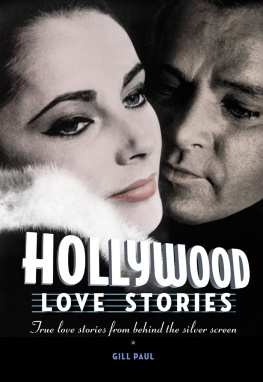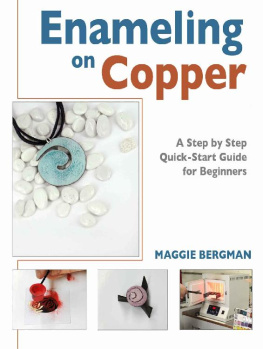Notorious
The Life of Ingrid
Bergman
Donald Spoto
Copyright 1997, Donald Spoto
with loving gratitude to
Teresa Wright
Tippi Hedren
Robert Anderson
All that's less cannot impart
Such blessedness upon thine art
As steadfast friends
notorious:
from the Latin notus (known): famous or celebrated; secondarily, known for something not generally approved
The Oxford English Dictionary
Contents
Acknowledgments
M Y FIRST ACKNOWLEDGMENT IS TO INGRID BERGMAN, WHOM I knew during the last seven years of her life. Although we had met briefly before the spring of 1975, it was then that she agreed to a series of taped interviews when I was preparing the manuscript of my first book, The Art of Alfred Hitchcock. As it happened, our conversations were not limited to her work with Hitchcock; she was, I thought, astonishingly forthcoming on a wide variety of other mattersas she was during our subsequent meetings in other cities, on various social and professional occasions.
But I had no thought of writing a biography of her. More than a decade after her death, my tapes of our conversations were squirreled away and my notes duly filedforever, I thought. But the more I spoke to those who knew and worked with her, the clearer it became that there was a remarkable life story to be told. And so I set to work.
Ingrid Bergman's first husband, Petter A. Lindstrom, M.D., welcomed me to his home and granted an extended interview. Subsequently, he allowed me unrestricted access and the privilege of citing more than two thousand pages of letters, private papers and documents that illuminated as never before the contours of Bergman's early life and the dozen years of their marriage. I am very grateful for this extraordinary cooperation.
Pia Lindstrom, the daughter of Ingrid and Petter, is a much admired media journalist and arts critic. We first met when my book The Dark Side of Genius: The Life of Alfred Hitchcock was published in 1983; I was her guest on a New York television show. Then and later, she impressed me with her keen insights about the time when, not yet a teenager, she was at the center of a worldwide media frenzy. Pia Lindstrom's assistance as I prepared this biography of her mother is everywhere evident, and I thank her for her perception and her confidence.
I never had the opportunity to meet Ingrid's second husband, Roberto Rossellini, who died in 1977. But Lars Schmidt, her third husband, was most forthcoming from the first stages of my work. He welcomed me to Dannholmen, the island home he shared with Ingrid; to Choisel, their residence in the French countryside; and to his offices in Paris. I must also thank Yanne Noorup, who now shares his life, for her warmth and hospitality.
VERY EARLY IN MY RESEARCH, I WAS GIVEN IMPORTANT ASSISTANCE BY W. H. Dietrich. He is better known simply by his surname, and is so cited in this book: Dietrich has thus signed canvases that have made him a highly respected artist whose work has duly won him worldwide respect. Like Ingrid, he emigrated from Sweden to Hollywood, and during several conversations he shared important details of that time, of his friendship with Ingrid and Petter Lindstrom, of Sweden in the 1930s and of Hollywood in the 1940s (when he was an artist at Paramount). He also allowed me to read and draw on his magnificent memoirs, one of his current works in progress. Dietrich and his wife, Patty, welcomed me on several occasions to their home in the California desert, and I am grateful for all they have contributed, by word and affection, to my life and my work. Of another member of that family, Greg Dietrich, more later.
ke Sandler, son of Sweden's former prime minister, is a historian, professor and writer who also knew the Lindstroms well. From the first weeks of my work, he provided crucial materials and answered difficult questions completely and candidly. He and his wife, Jane, never ceased to support and encourage this project.
Obviously, a mountain of important material existed only in Swedishuntil I was fortunate to be introduced to the ideal translator, Gunvor Dollis. She not only found the right words to render a difficult language into comprehensible English, she also found the right tone for the special cadences of poetry, drama, reviews, letters and essays. With warmth, alacrity, wit and a keen sense of time and place, she provided me with inestimable literary support.
For any modern biography, interviews are of course extremely important. The following people gave gladly and generously of their time, detailing the fine points of their various relationships with Ingrid. This book would be much the poorer without the contributions of:
Larry Adler, Robert Anderson, Pierre Barillet, Kate Barrett, Laurinda Barrett, the late Katharine (Kay) Brown, Gene Corman, the Baron Gran von Essen, Sir John Gielgud, O.M., Guy Green, Signe Hasso, Arthur Hill, Dame Wendy Hiller, the late Sir Alfred Hitchcock, Griffith James, Margaret Johnstone, Ted Kotcheff, Arthur Laurents, Roger Lobb, Tanya Lopert, Sidney Lumet, Lasse Lundberg, Elliot Martin, Gregory Peck, Jenia Reissar, the late Ann Todd, Paavo Turtiainen, Stephen Weiss, Teresa Wright.
For various other assistances necessary to fill in important elements in Ingrid Bergman's life, I must acknowledge the kind help of Graham Waring, M.D., Rick Carl, Roland Oberlin, Gene Feldman and Suzette Winter.
At THE DEPARTMENT OF CULTURAL AFFAIRS OF THE SWEDISH INFORMATION Service, New York City, important introductions to colleagues in Sweden came from Elisabeth Halvarsson-Stapen.
My work in Stockholm would not have been possible without the gracious and generous help of many.
At Svensk Filmindustri (the Swedish Film Institute), I worked with the help of Margareta Nordstrm, Head of Documentation; Ann-Kristin Westerberg, Head of the Copyright Department; Elisabet Helge, Head of the Stills Department; Maria Stenmark, Librarian; and Catharina Stackelberg, in the Production Department.
In the Stockholm City Archives, Gran Biomberg provided important documentation and smoothed the way so that I could access civic and family records.
In the Swedish National Archives, Stockholm, similar assistance was provided by Toni Fridh.
School syllabi, grade records and genealogies of Sweden are housed with meticulous care in the Royal National Library, Stockholm. The staff there located for me many precious documents and made copies available on short notice.
Ingrid Bergman attended the Royal Dramatic Theater School, Stockholm, which has kept detailed archives and fascinating historic material that enabled me to research and understand not only her time there but the amazing history of this venerable institution. At the school, I was welcomed and aided by Eva Hagman, Dag Kronlund, Britt-Marie Lindvall and Bengt Persson.
For the particular purpose of assisting me, the actress, teacher and writer Ingrid Luterkort came to meet me at the Royal Dramatic Theater School. She studied there in Ingrid's time, and so our conversation, her memories and the materials she shared were invaluable in documenting this time.
Uno Myggan Ericson made vital papers available to me and was always ready to answer important questions and to set me in the right direction.
At the office of the International Magazine Service (IMS Bildbyr), Stockholm, Helena Westerberg enabled me to locate important rare photographs.
Eva-Maria Thornlund, sales manager at Dagens Nyheter/Presstext, Stockholm, provided immediate access to the comprehensive files of Swedish newspaper clippings documenting Ingrid Bergman's life and career.
For their articulate and detailed guided tour of Stockholm, during which they made particular reference to the city during the time of Ingrid Bergman and her family, I am grateful to Stefan and Birgitta Nilson. They also replied with alacrity from afar when I required certain documents later, during my writing.
Next page










